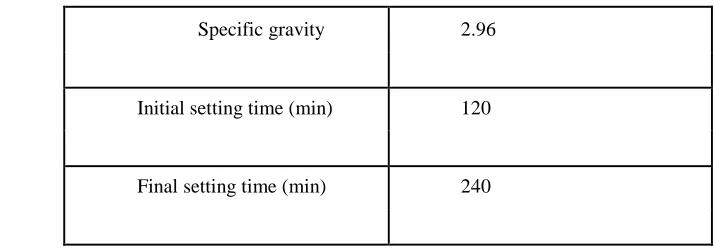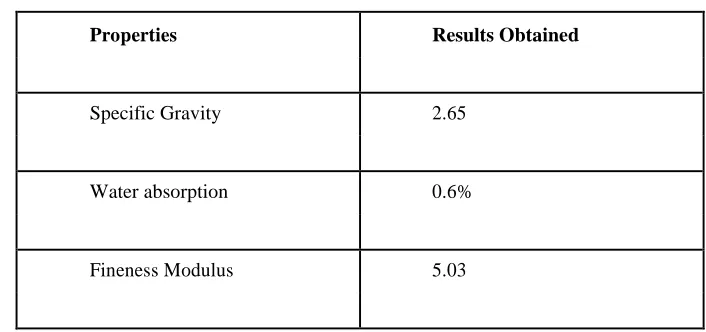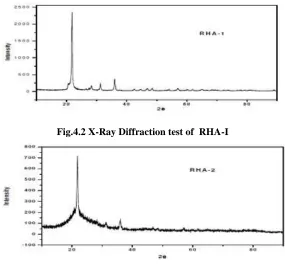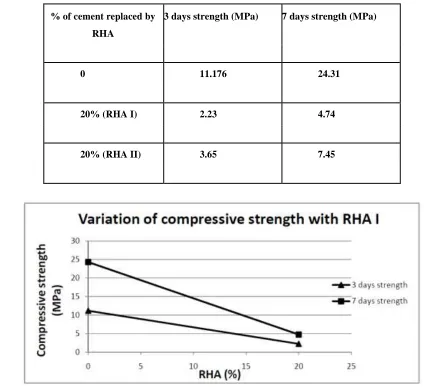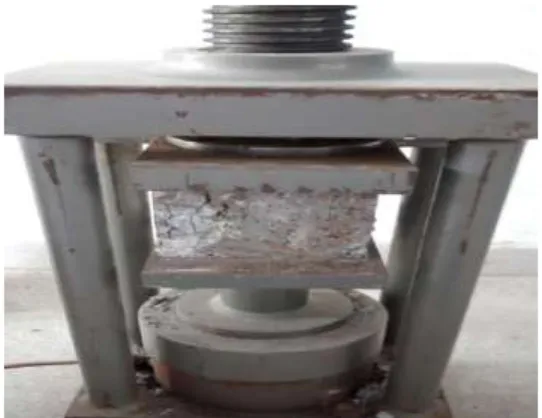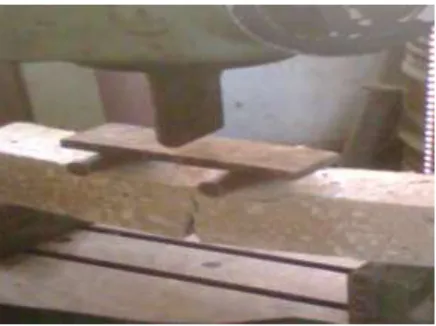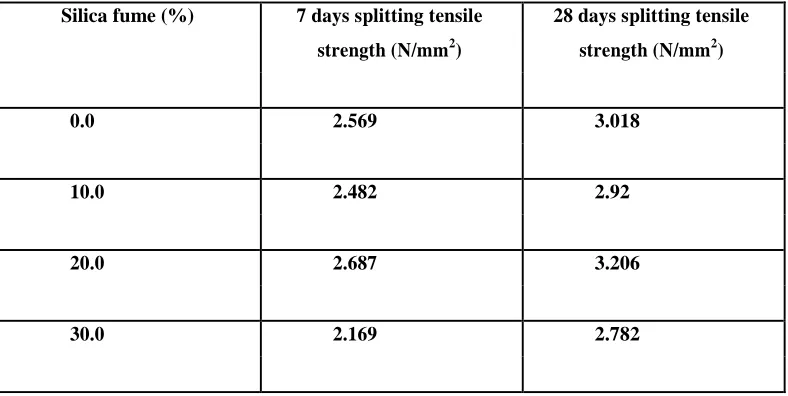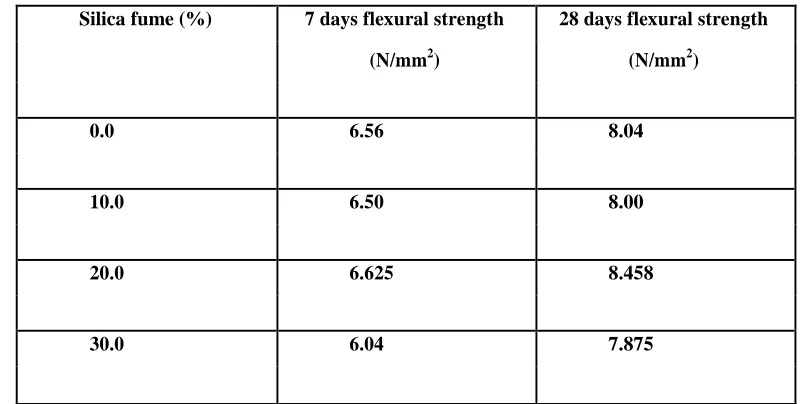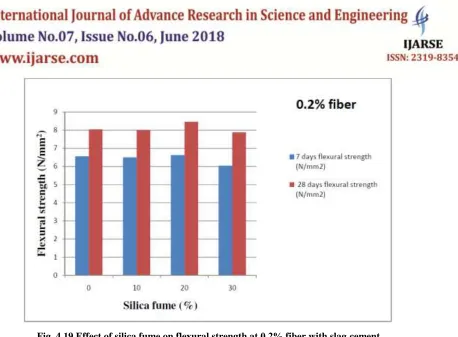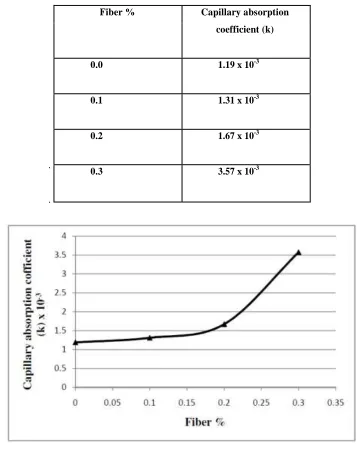38 | P a g e
EXPERIMENTAL INVESTIGATION ON EFFECT OF
POZZOLANS ON FIBER REINFORCED CONCRETE
M Veerapandu
1, B Ramakrishna
2.
1* M.Tech Student, Amrita Sai Institute of Science & Technology, Paritala, India.
2* Assistant Professor, Amrita Sai Institute of Science & Technology, Paritala, India.
ABSTRACT
High-performance concrete is defined as concrete that meets special combinations of performance and uniformity requirements that cannot always be achieved routinely using conventional constituents and normal mixing, placing, and curing practices. Ever since the term high-performance concrete was introduced into the industry, it had widely used in large-scale concrete construction that demands high strength, high flowability, and high durability. A high-strength concrete is always a high-performance concrete, but a high-performance concrete is not always a high-strength concrete. Durable concrete Specifying a high-strength concrete does not ensure that a durable concrete will be achieved. It is very difficult to get a product which simultaneously fulfill all of the properties. So the different pozzolanic materials like Ground Granulated Blast furnace Slag (GGBS), silica fume, Rice husk ash, Fly ash, High Reactive Metakaolin, are some of the pozzolanic materials which can be used in concrete as partial replacement of cement, which are very essential ingredients to produce high performance concrete. So we have performed XRD tests of these above mentioned materials to know the variation of different constituent within it. Also it is very important to maintain the water cement ratio within the minimal range, for that we have to use the water reducing admixture i.e superplasticizer, which plays an important role for the production of high performance concrete. So we herein the project have tested on different materials like rice husk ash, Ground granulated blast furnace slag, silica fume to obtain the desired needs. Also X-ray diffraction test was conducted on different pozzolanic material used to analyse their content ingredients. We used synthetic fiber (i.e Recron fibe) in different percentage i.e 0.0%, 0.1%, 0.2%, 0.3% to that of total weight of concrete and casting was done. Finally we used different percentage of silica fume with the replacement of cement keeping constant fiber content and concrete was casted. In our study it was used two types of cement, Portland slag cement and ordinary Portland cement.
We prepared mortar, cubes, cylinder, prism and finally compressive test, splitting test, flexural test are conducted. Finally porosity and permeability test conducted. Also to obtain such performances that cannot be obtained from conventional concrete and by the current method, a large number of trial mixes are required to select the desired combination of materials that meets special performance.
39 | P a g e
I.INTRODUCTION:
Concrete is the most widely used man-made construction material in the world. It is obtained by
mixing cementitious materials, water, aggregate and sometimes admixtures in required proportions. Fresh
concrete or plastic concrete is freshly mixed material which can be moulded into any shape hardens into a
rock-like mass known as concrete. The hardening is because of chemical reaction between water and cement, which
continues for long period leading to stronger with age. The utility and elegance as well as the durability of
concrete structures, built during the first half of the last century with ordinary portland cement (OPC) and plain
round bars of mild steel, the easy availability of the constituent materials (whatever may be their qualities) of
concrete and the knowledge that virtually any combination of the constituents leads to a mass of concrete have
bred contempt. Strength was emphasized without a thought on the durability of structures. As a consequence of
the liberties taken, the durability of concrete and concrete structures is on a southward journey; a journey that
seems to have gained momentum on its path to self– destruction. This is particularly true of concrete structures
which were constructed since 1970 or thereabout by which time (a) the use of high strength rebars with surface
deformations (HSD) started becoming common, (b) significant changes in the constituents and properties of
cement were initiated, and (c) engineers started using supplementary cementitious materials and admixtures in
concrete, often without adequate consideration.
II.EXPERIMENTAL PROGRAMMES
Synthetic fiber i.e Recron fiber is used in concrete for the production of fiber reinforced concrete. We are going
to use Recron fiber in different percentage i.e, 0%, 0.1%, 0.2%, 0.3% to the weight of concrete and study the 7
days and 28 days compressive strength, splitting tensile and flexural strength of concrete to that of normal
concrete with maintaining the water cement ratio in the range of 0.35-0.41. Then with different percentages of
silica fume i.e, 10%, 20%, 30% fixing constant fiber percentage at 0.2% cubes, cylinders and prisms were
casted and tested to analyse the change in compressive, splitting tensile and flexural strength. We used two
types of cement for our study i.e Portland slag cement and ordinary Portland cement (53 grade). XRD test was
being conducted to idealize the chemical composition RHA, GGBS, silica fume.
Finally Porosity and Capillary absorption test was conducted on different specimens to analyse the
affect of silica fume on concrete.
Table 4.1. Properties of Portland slag cement:
Specific gravity 2.96
Initial setting time (min) 120
40 | P a g e
Table 4.2. Properties of Ordinary Portland cement:Specific gravity 3.1
Initial setting time (min) 90
Final setting time (min) 190
Fine aggregate:
In this study it was used the sand of Zone-II, known from the sieve analysis using different sieve sizes
(10mm, 4.75mm, 2.36mm, 1.18mm, 600µ, 300µ, 150µ) adopting IS 383:1963.
Table 4.3. Properties of fine aggregate:
Properties Results Obtained
Specific Gravity 2.65
Water absorption 0.6%
Fineness Modulus 5.03
Ground granulated blast furnace slag (GGBS):
As pozzolanic activity greatly depends on fineness, so GGBS passing through 75 micron whose
fineness of order of 275-550 m2/kg was used. Specific gravity test was conducted using Le-Chatelier apparatus
and found to be 2.77. X-Ray diffraction test was conducted shown below in figure no. 4.1.
41 | P a g e
Rice husk ash:
In this study we have used two types of Rice husk Ash. First type which was low burned having
greater percentages of carbon (which is having negative impact on strength development), so looking black and
second type is looking white because it was being burnt in higer temperature. Here in second type of RHA the
percentage of carbon is low. The specific gravity test was carried out using Le- Chatelier apparatus and found to
be 2.21 for RHA– I and 2.20 for RHA-II. X-Ray diffraction test was carried out shown below in fig no. 4. 2 and
fig no. 4.3.
Fig.4.2 X-Ray Diffraction test of RHA-I
Fig. 4.3 X-Ray Diffraction test of RHA-II
Silica fume:
Silica fume is used in different percentage (0%, 10%, 20%, 30%) with the replacement of cement for
its greater pozzolanic activity along with fiber. The specific gravity of silica fume was found out using
Le-Chatelier apparatus and found to be Specific gravity- 2.36. X-Ray diffraction test was conducted shown below
in figure no. 4.4.
42 | P a g e
III.RESULTS AND DISCUSSION:
Test Result:
Table 4.8. Effect of RHA on Compressive strength of cement:
% of cement replaced by 3 days strength (MPa) 7 days strength (MPa)
RHA
0 11.176 24.31
20% (RHA I) 2.23 4.74
20% (RHA II) 3.65 7.45
43 | P a g e
Fig. 4.9 Variation in Compressive strength of mortar with use of RHA IIIV.DISCUSSION:
It is observed here that the consistency percentage is increasing as the percentage of GGBS increases as a
cement replacement, but the change is not so abrupt. But found that as we go on increasing the percentage of
Rice husk ash the consistency percentage increases rapidly.
44 | P a g e
Fig. 4.11 Determination of splitting tensile strength of cylinderFig. 4.12 Determination of Flexural strength of prism
4.4.1 Test Result:
Table 4.13. Effect of silica fume on Compressive strength with 0.2%fiberusing slag cement:
Silica fume (%) 7 days Compressive 28 days Compressive
strength (N/mm2) strength (N/mm2)
0.0 19.77 22.44
10.0 17.55 21.55
45 | P a g e
30.0 16.22 20.22
Fig. 4.17 Effect of silica fume on compressive strength at 0.2% fiber withslag cement
Table 4.14. Effect of silica fume on splitting tensile strength with 0.2%fiberusing slag cement:
Silica fume (%) 7 days splitting tensile 28 days splitting tensile
strength (N/mm2) strength (N/mm2)
0.0 2.569 3.018
10.0 2.482 2.92
20.0 2.687 3.206
46 | P a g e
Fig. 4.18 Effect of silica fume on splitting tensile strength at 0.2% fiberwith slag cementTable 4.15. Effect of silica fume on flexural strength with 0.2%fiber using slag cement:
Silica fume (%) 7 days flexural strength 28 days flexural strength
(N/mm2) (N/mm2)
0.0 6.56 8.04
10.0 6.50 8.00
20.0 6.625 8.458
47 | P a g e
Fig. 4.19 Effect of silica fume on flexural strength at 0.2% fiber with slagcementCAPILLARY AND POROSITY TEST:
Capillary and porosity test was conducted on specimens prepared with fiber and (fiber + silica fume) of
Portland slag cement to observe the amount of water absorption and voids percentage present within the casted
concrete.
Capillary test:
Firstly cubes with different percentage of fibers (0.0%,0.1%, 0.2%, 0.3%) are tested then secondly
cubes of different silica fume percentage (10%, 20%, 30%) with constant 0.2% fiber were tested. All the
specimens of Portland slag cement. The value of capillary absorption coefficient (k) was determined for
different mixes.
48 | P a g e
4.5.1 Test Result:Table 4.19. Capillary absorption coefficient (k) for different fiber content:
Fiber % Capillary absorption
coefficient (k)
0.0 1.19 x 10-3
0.1 1.31 x 10-3
0.2 1.67 x 10-3
0.3 3.57 x 10-3
Fig. 4.25 Capillary absorption coefficient (k) for different fiber content
V.CONCLUSION
In this present study with the stipulated time and laboratory set up an afford has been taken to enlighten the use
of so called pozzolanic material like ground granulated blast furnace slag, rice husk and silica fume in fiber
reinforced concrete in accordance to their proficiency. It was concluded that,
Use of GGBS as cement replacement increases consistency. Although fineness greatly influenced on
proper pozzolanic reaction still GGBS passing 75 micron sieve not giving good strength of mortar.
49 | P a g e
With replacement of cement with RHA the consistency increases. Use of RHA which burned properlyin controlled temperature improves the strength of mortar. But use of RHA not giving satisfactory
strength result.
With the use of superplasticizer it possible to get a mix with low water to cement ratio to get the
desired strength.
In case of Portland slag cement with the use of Recron fiber , the 28 days compressive strength at 0.2%
fiber content the result obtained is maximum. The 28 days splitting tensile and flexural strength also
increases about 5% at 0.2% fiber content to that of normal concrete. Further if fiber percentage
increases then it was seen a great loss in the strength.
As the replacement of cement with different percentages with Silica fume increases the consistency
increases.
With Portland slag cement keeping 0.2% Recron fiber constant and varying silica fume percentage the
compressive, splitting tensile, flexural strength affected remarkably. Using 20% silica fume with 0.2%
fiber percentage the 28 days compressive strength increases 7% more than concrete with 0.2% fiber
only. 28days split tensile and flexural strength increases further, about 12% and 10% that of normal
concrete.
REFERENCES
1. Pierre-Claude Aitcin, “Developement in the application of high performance
concrete”, Construction and Building Material, Vol. 9. No. 1, 1995, 13-17
2. Andrzej Ajdukiewicz and Wojciech Radomski, “Trends in the Polish research
on high-performance concrete”, Cement and Concrete Composite, Vol. 24, 2002, 243-251
3. Pierre-Claude Aitcin, “The durability characteristics of high performance
concrete”, Cement & Concrete Composite, Vol. 25, 2003, 409-420
4. Moayad N Al-Khalaf and Hana A Yousif, “Use of Rice husk ash in concrete”,
The International Journal of Cement Composites and Lightweight Concrete, Vol. 6, November 4 1984.
5. Muhammad Soaib Ismail and A. M. Waliuddin, “Effect of rice husk ash on
high strength concrete”, Construction and Building Material, Vol. 10. No. 7, 1996, 521-526
6. Gemma Rodriguez de Sensale, “Strength development of concrete with
rice-husk ash”, Cement & Concrete Composite, Vol. 28, 2006,158-160
7. A Oner & S Akyuz, “An experimental study on optimum usage of GGBS for
the compressive strength of concrete”, Cement & Concrete Composite, Vol. 29, 2007, 505-514.
8. Caijun Shi and Jueshi Qian, “High performance cementing materials from
industrial slags”, Resourses Conservation & Recyclin, Vol. 29, 2000, 195-207
9. K Ganesh Babu and V. Sree Rama Kumar, “Efficiency of GGBS in Concrete”,
Cement and Concrete Research, Vol. 30, 2000, 1031-1036.
10. M. Collepardi, “Admixtures used to enhance placing characteristics of
concrete”, Cement & Concrete Composite, Vol. 20, 1998, 103-112
50 | P a g e
superplasticizer type and mix design parameters on the performance of them in concrete mixtures”, Cement
& Concrete Composite, Vol. 27, 2005, 217-222
12. Ronald F. Zollo, “Fiber-reinforced Concrete: an Overview after 30 Years
